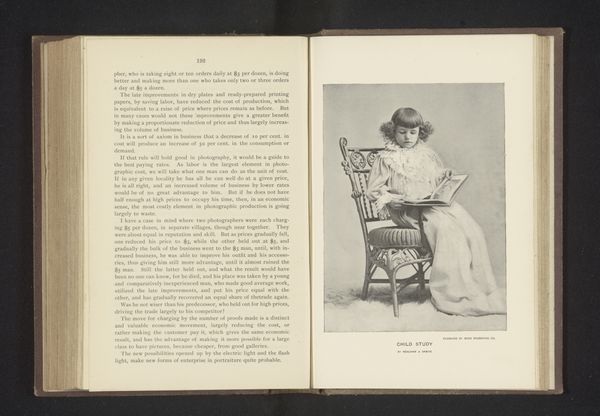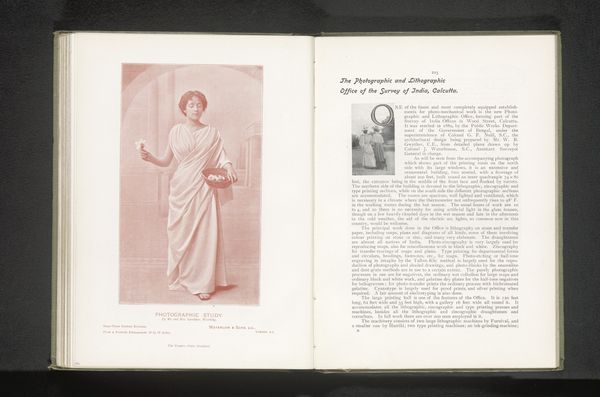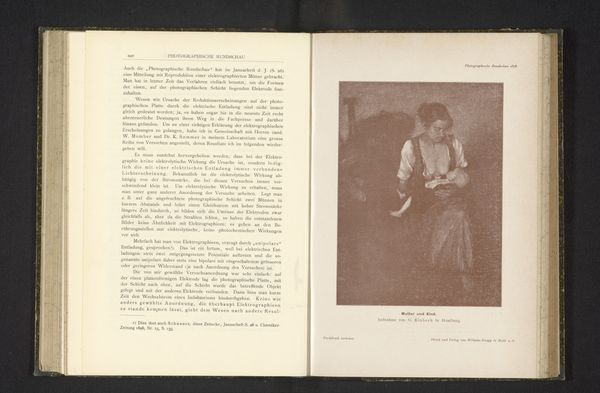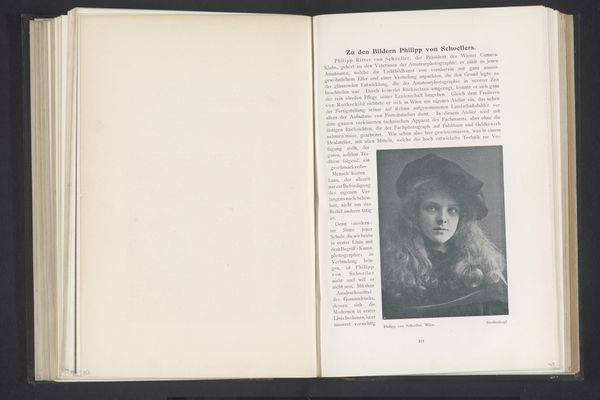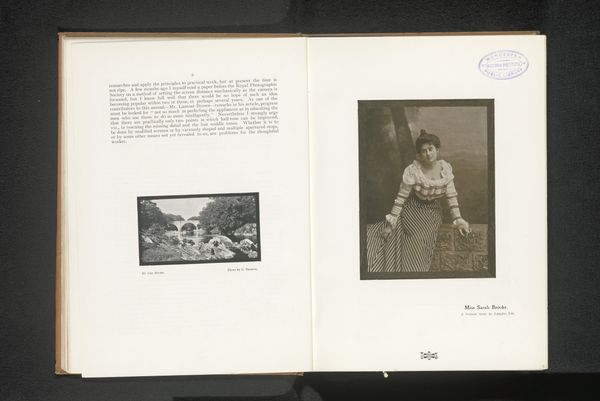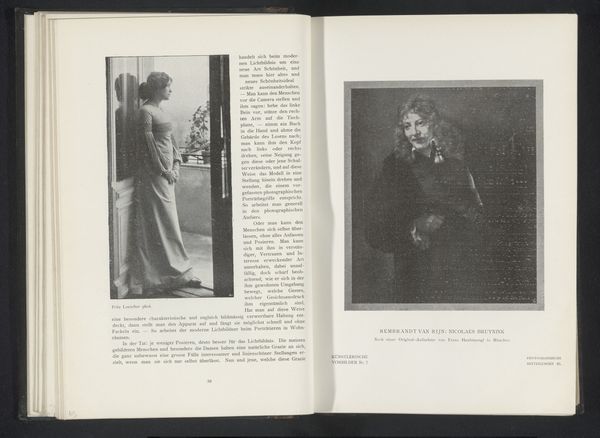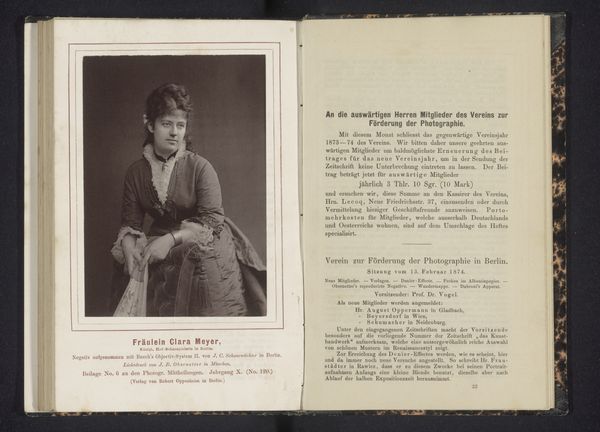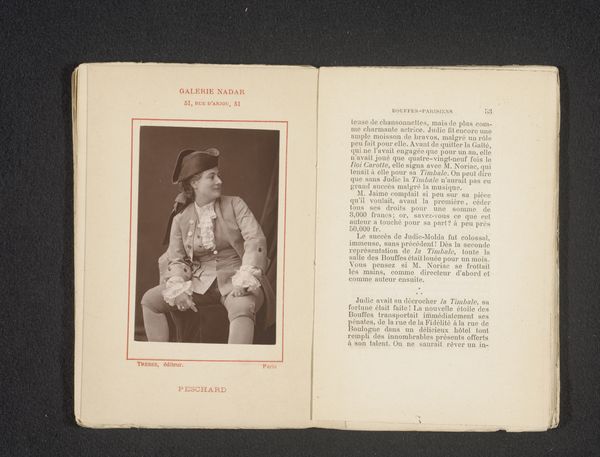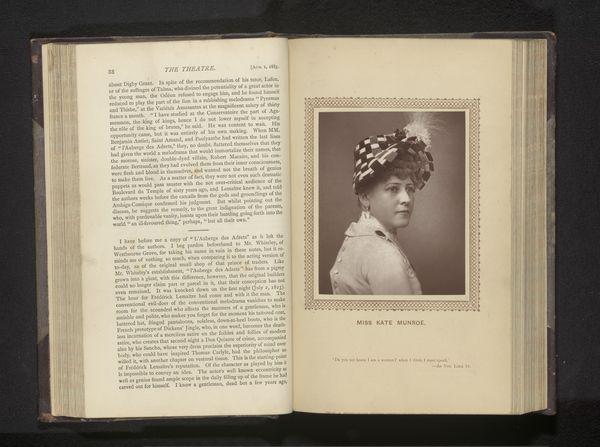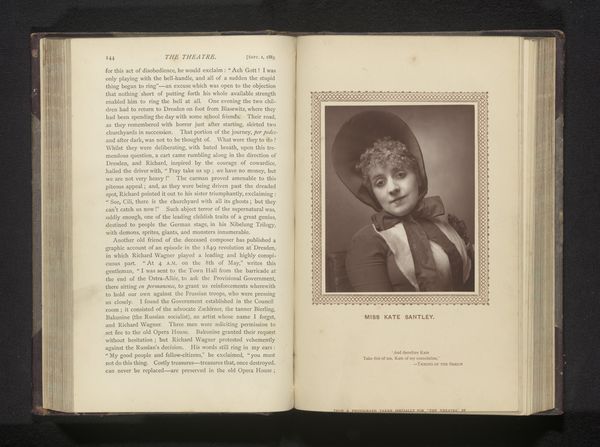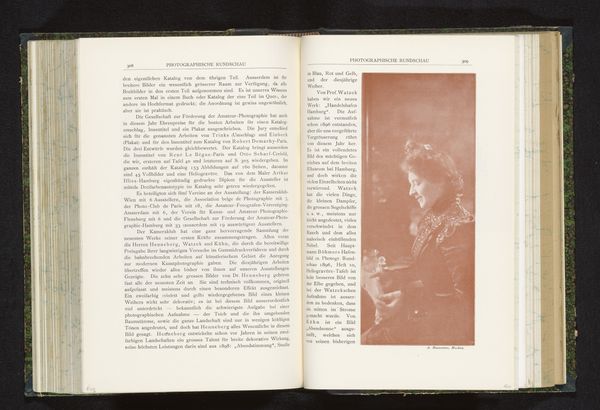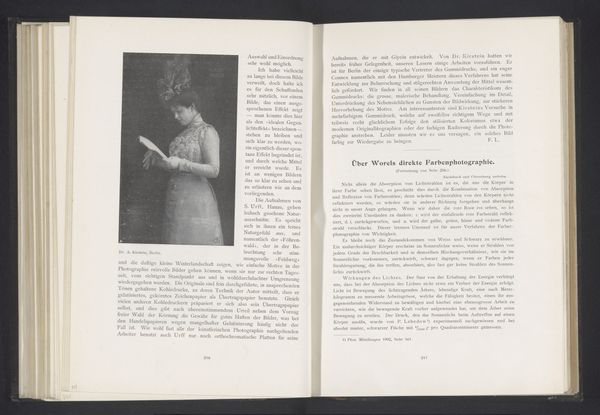
photography, gelatin-silver-print
#
portrait
#
photography
#
gelatin-silver-print
#
academic-art
Dimensions: height 189 mm, width 133 mm
Copyright: Rijks Museum: Open Domain
Curator: Here we have "Portrait of an Unknown Woman," a gelatin-silver print dating from before 1898, attributed to Lafayette. The sitter appears poised in a light-colored gown with feathered embellishments. Editor: It projects a sense of delicate vulnerability to me. The monochromatic tones really accentuate the softness of her dress and the diffuse lighting creates a wistful mood. The composition with the sitter looking slightly away suggests a fleeting moment captured. Curator: Let's consider the implications of gelatin-silver printing, a process refined throughout the late 19th century. This particular printing method allowed for a broader tonal range and sharper details compared to earlier photographic processes. The commercial availability of these materials democratized portraiture, offering more access for a growing middle class. The very texture and handling of the print, originally housed in a publication about photographic printing, highlight its integration into expanding industrial processes. Editor: Absolutely. I am struck by her ornamentation. The feathers evoke ideas about aspiration and beauty, aligning the woman with culturally coded concepts about women at the turn of the century. The overall effect constructs her as an emblem of societal ideals concerning femininity and class at that specific historical juncture. We should recall similar use of symbolic costume items in portraits of stage and film stars, where the same association would enhance the viewers impression. Curator: That's interesting, particularly within the framework of the photographic studio. The constructed setting invites questions of labor. How many assistants and craftspeople were involved in producing the sets, clothing, and final print itself? The question of artistic labor and production of images meant this form became accessible across society. The photograph's physical being, crafted with specific intent and technique, reflects this expansion. Editor: It seems as though these elements and symbols all combine to offer us an insight into a visual language being employed, but with the mystery of the sitter unknown to us today. Curator: A good point. This intersection of artistic intention and evolving photographic techniques gives us something intriguing to think about in considering photography’s contribution to cultural norms during this era. Editor: Precisely. Looking closely, this portrait seems to be telling several interesting stories.
Comments
No comments
Be the first to comment and join the conversation on the ultimate creative platform.
